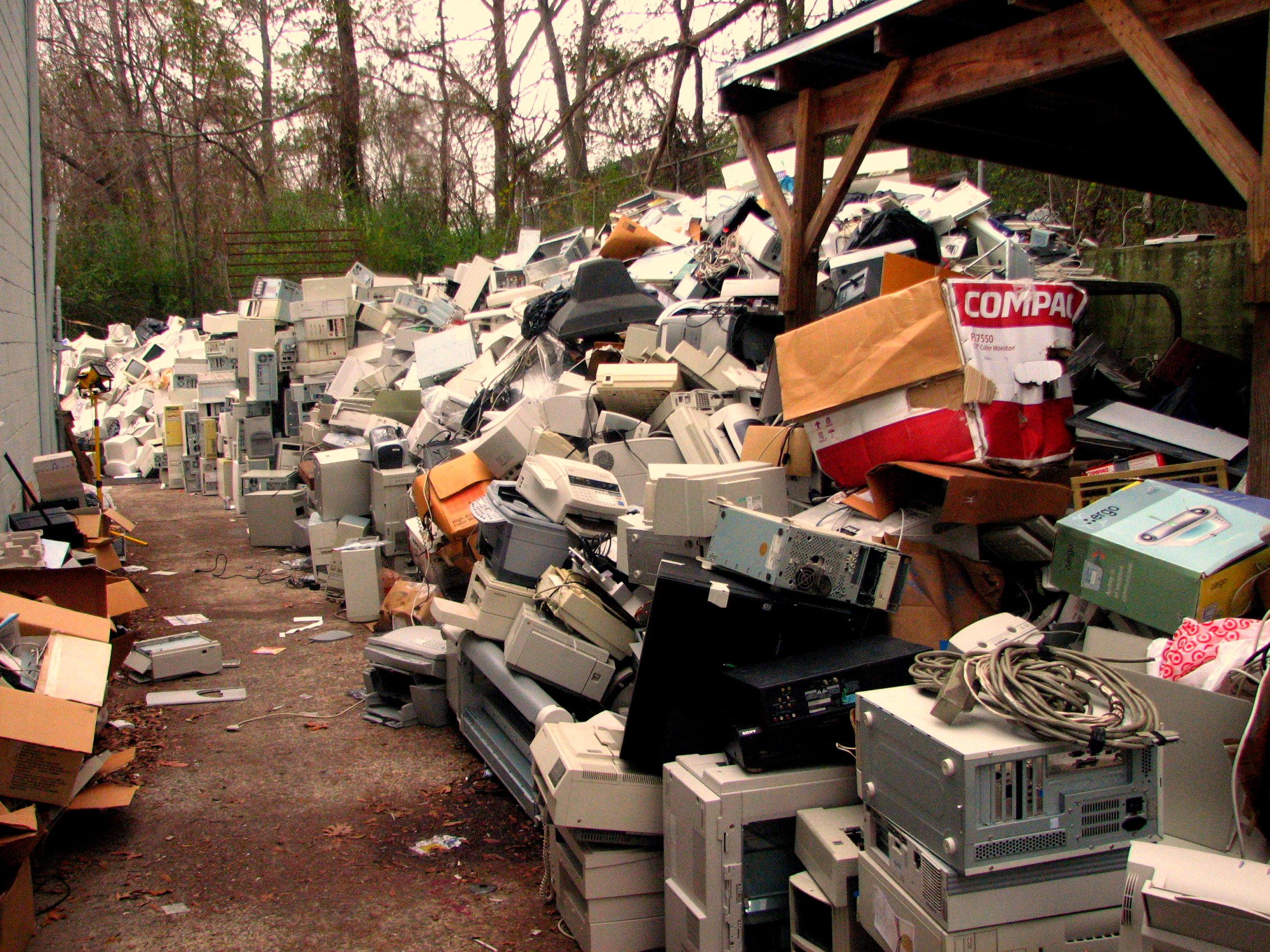In the life of almost every household appliance, there comes that moment of out with the old and in with the new.
In our consumer-driven society, electrical and electronic equipment have never been more efficient, economical or in demand. But our desire to own the best and the latest is also contributing to an environmental issue of mounting concern.
E-waste is one of the fastest growing waste streams in developing, emerging and developed regions and it covers all electrical and electronic equipment and parts discarded by consumers.
According to figures published in the Global E-waste Monitor 2014 and compiled by the United Nations University, last year an estimated 41.8 million metric tonnes of e-waste was discarded throughout the world.
This comprised mostly end-of-life kitchen, laundry and bathroom equipment such as microwave ovens, washing machines and dishwashers, although mobile phones, computers and printers also featured.

That figure is estimated to rise by almost 20 per cent to 50 million metric tonnes in 2018, which is why waste management practitioners are seeking new technologies and approaches to deal with e-waste.
Internationally there has been a strong emphasis on extended producer responsibility (EPR) to tackle the problem. Many developed nations have successfully implemented EPR with varying models, while developing countries are following the same path, though not without some challenges.
Broader spectrum of household e-waste
The concentration so far has been on end-of-life IT equipment, such as computers and mobile phones, and most take-back schemes around the world tend to concentrate on these items. We need to focus on a broader spectrum of household e-waste if we are to slow its growth.
A recent study commissioned by the Australia and New Zealand Recycling Platform and conducted by the Economist Intelligence Unit found that Australia generates one of the highest per capita volumes of e-waste in the world. Of 19.71kg per person per year, between 25-30 per cent comes from digital and audio–visual items.
The study also showed that growing incorporation of “smart technology” into common household items is regarded as the main cause of increases in the global e-waste streams from homes.
This gives rise to important questions such as –
- How do we prepare for the growth in household e-wastes?
- Are existing take-back programs – which currently exist in only a few countries — sufficient to handle the new demands?
- Do we have sufficient regulations to ensure small household e-waste items are not mixed with residual waste contents in traditional household bins?
Most developing countries do not practise waste segregation at the source. This means that municipal solid waste can contain up to 3 per cent hazardous wastes, including e-waste. This can increase concentrations of heavy metals in leachate and contribute to environmental pollution.
Rare earths and precious metals
Meanwhile, the sheer range of household electrical and electronics items these days brings with it the use of rare earths and precious metals within circuits and chips, all of which can increase subsequent waste management challenges when items become obsolete and are discarded.
A noticeable difference between e-waste systems in European Union countries and others around the world is overall scope. Having recast its Waste Electrical and Electronic Equipment Directive (WEEE Directive), the EU has broadened coverage to include all electrical and electronic equipment. Too many other countries, however, are under-prepared to manage the emerging dilemma of complex household e-wastes.
There are significant benefits from expanding the coverage of e-waste products beyond the traditional computers, mobile phones and televisions, most notably more efficient recycling and material recovery processes. Greater e-waste volumes will also encourage private sector investment in recycling and recovery technologies.
Crucially, e-waste policies must have a consumer focus, particularly regarding small e-waste items.
In Finland, the government encourages recycling of small household e-waste items by treating them differently from large items. In Japan, consumers do not have to pay the recycling fee for small household items. In the Netherlands, a “pay-as-you-throw” system has seen a significant reduction in small household e-waste items occurring in household waste streams.
As noted in the WEEE Directive, a weight-based recycling target may result in greater incentive to recycle only large household items. A unit-based approach is better.
Challenges in developing world
However, the biggest challenge facing e-waste policy makers is in implementing EPR in developing countries, where governments can struggle to collect funds from producers or imports if goods are smuggled in, or if small, shop-assembled products enjoy a large share of the market.
A further challenge arises from systems that create incentives for collectors and recyclers to seek extra subsidies by exaggerating the amount of e-waste they collect. Competition between the formal and informal recycling sector is another impediment.
There is also unwillingness among consumers in developing countries to hand over household e-waste items or pay for the disposal of wastes in general. Many consumers regard household e-waste as an income-generating opportunity. It could also be an attitude problem.
What is certain is that the e-waste management landscape is about to change its traditional focus on computers and mobile phones to a broader range of more sophisticated household e-waste items.
With the exception of a few countries, most of us are about to face the reality of this latest challenge.
Author
Dr Sunil Herat, Senior Lecturer in Griffith University’s School of Engineering and Associate Editor of the journal Waste Management & Research




